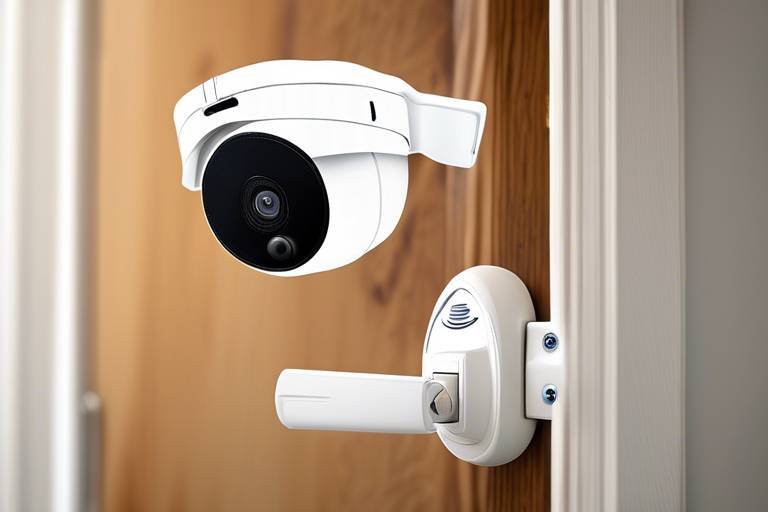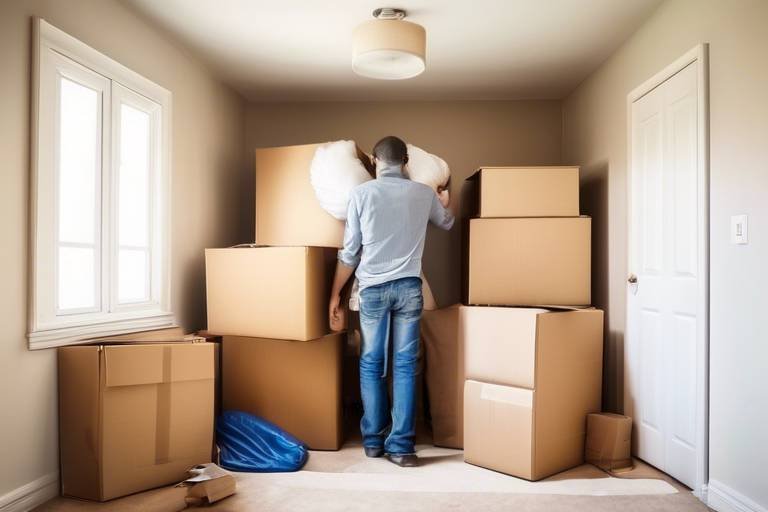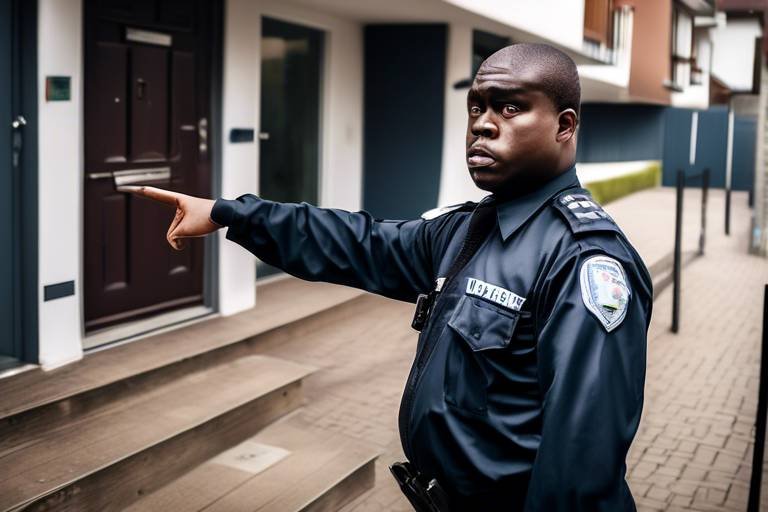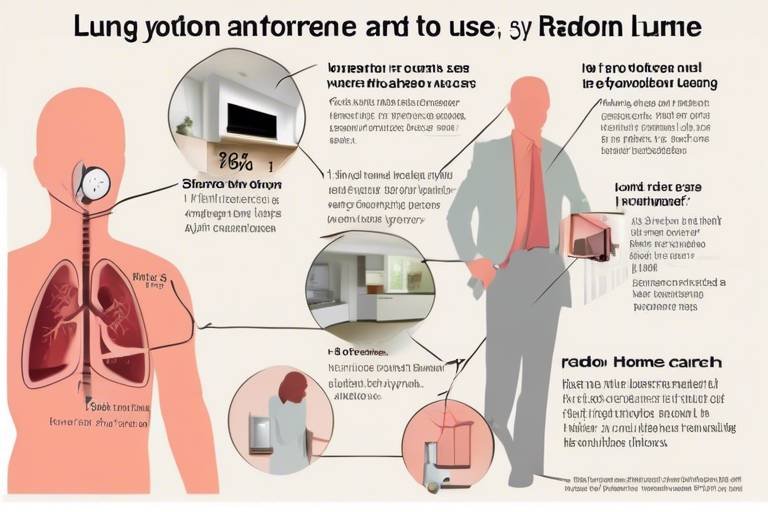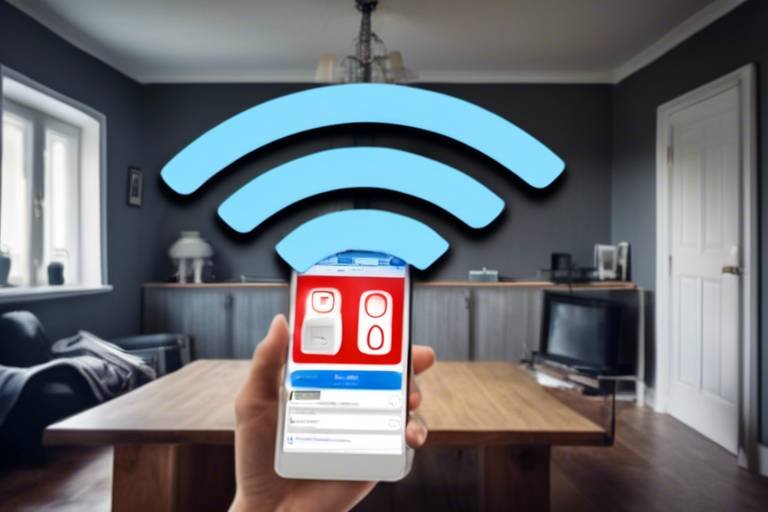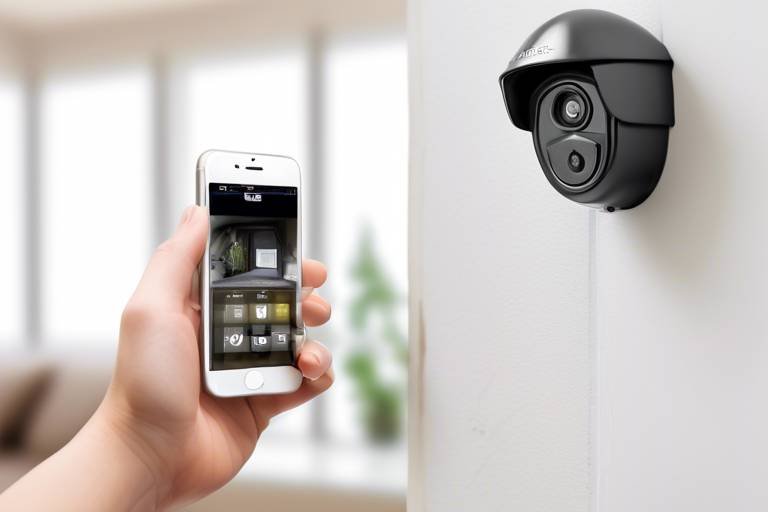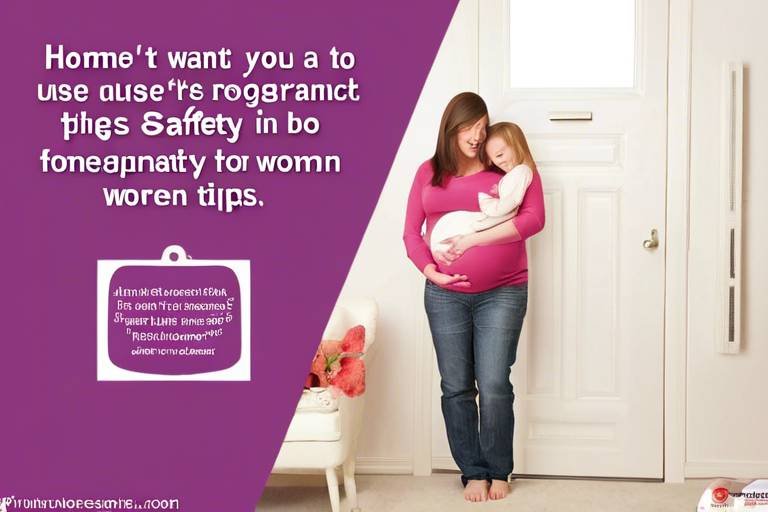Babyproofing Your Home - A Helpful Guide
As a parent, the safety of your little one is always at the forefront of your mind. Babyproofing your home is not just a precaution; it’s a necessity. This article provides essential tips and strategies for making your home safe for babies and toddlers, ensuring peace of mind for parents while allowing children to explore their environment safely. Think of your home as a playground, but one that needs to be designed with safety in mind. By taking a few simple steps, you can create a secure space where your child can grow, learn, and play without constant worry.
Before diving into the nitty-gritty of babyproofing, it's crucial to understand the fundamental principles of creating a safe environment. Babyproofing is about being proactive rather than reactive. It involves recognizing potential hazards in your home and taking steps to eliminate or mitigate them. This is especially important because babies and toddlers are naturally curious, exploring their surroundings with a sense of wonder that can sometimes lead to dangerous situations.
Common hazards in a typical household include sharp objects, toxic substances, and electrical outlets. By familiarizing yourself with these dangers, you can formulate a plan to keep your little one safe. Remember, creating a safe space is not a one-time task but an ongoing process as your child grows and their abilities change.
Let’s explore some typical dangers found in households. From sharp objects lurking in drawers to choking hazards hidden in plain sight, knowing what to look for is half the battle. Here are some of the most common hazards you should be aware of:
- Sharp Objects: Knives, scissors, and other tools can cause serious injuries.
- Choking Hazards: Small toys or household items can easily be swallowed.
- Toxic Substances: Cleaning supplies and medications need to be stored safely.
One of the most significant risks in any home is sharp objects and tools. These items can be incredibly dangerous, especially for a curious toddler who loves to explore. It's essential to secure knives, scissors, and other sharp tools to prevent accidents. Consider using drawer locks or keeping these items in high cabinets that are out of reach. Just like you wouldn’t leave a lion loose in a petting zoo, don’t leave sharp tools accessible to your child!
The kitchen is often the heart of the home, but it can also be a minefield of hazards for little ones. Implementing practical strategies can ensure your kitchen remains a safe space. Start with cabinet locks to keep dangerous items out of reach. Stove guards can prevent your child from accidentally turning on burners, and using back burners for cooking can minimize the risk of reaching hands. Think of your kitchen as a fortress—every entry point needs to be secured!
The bathroom is another area that requires careful attention. With its slippery surfaces and potential for harmful substances, it’s essential to take steps to secure this space. Start by securing medications in high cabinets and using childproof locks. Non-slip mats can help prevent slips and falls, making bath time a safer experience. It’s all about turning potential danger zones into safe havens.
Electrical outlets represent another significant hazard. Babies are naturally drawn to cords and plugs, making it vital to childproof these areas. Use outlet covers to prevent little fingers from exploring. Additionally, securing cords out of reach can prevent accidental yanks that could lead to electrical accidents. Think of your home like a jungle—every vine and branch needs to be tamed for safe exploration!
Creating a safe play environment is just as important as securing the rest of your home. Designate specific areas where your child can play freely without the risk of injury. Use safety gates to block off stairs and other hazardous areas. Soft surfaces, like foam mats or carpets, can cushion falls and minimize injuries during playtime. Think of this space as a mini oasis where your child can explore without fear.
When it comes to toys, safety should always be your top priority. Opt for age-appropriate, non-toxic toys that are free from small parts and other hazards. Look for labels that indicate safety certifications, and avoid toys with sharp edges or small components that could pose a choking risk. Just like you would choose the best ingredients for a recipe, selecting the right toys is essential for a safe and enjoyable play experience.
Don’t forget about the outdoor spaces! Babyproofing your outdoor areas is just as important as the indoors. Secure fences to keep your child from wandering off and remove any hazardous plants that could be harmful if ingested. Creating a safe outdoor environment allows your little one to explore nature while staying protected. Think of your yard as an adventure park, where every corner offers a new discovery, but safety is always the priority.
Q: When should I start babyproofing my home?
A: It's best to start babyproofing before your baby starts crawling, ideally during pregnancy or as soon as your child begins to explore their surroundings.
Q: How do I know if a toy is safe for my child?
A: Look for age recommendations on the packaging, check for safety certifications, and avoid toys with small parts that could pose a choking hazard.
Q: Are there any resources for babyproofing my home?
A: Many parenting websites and local child safety organizations offer checklists and guides for babyproofing your home effectively.
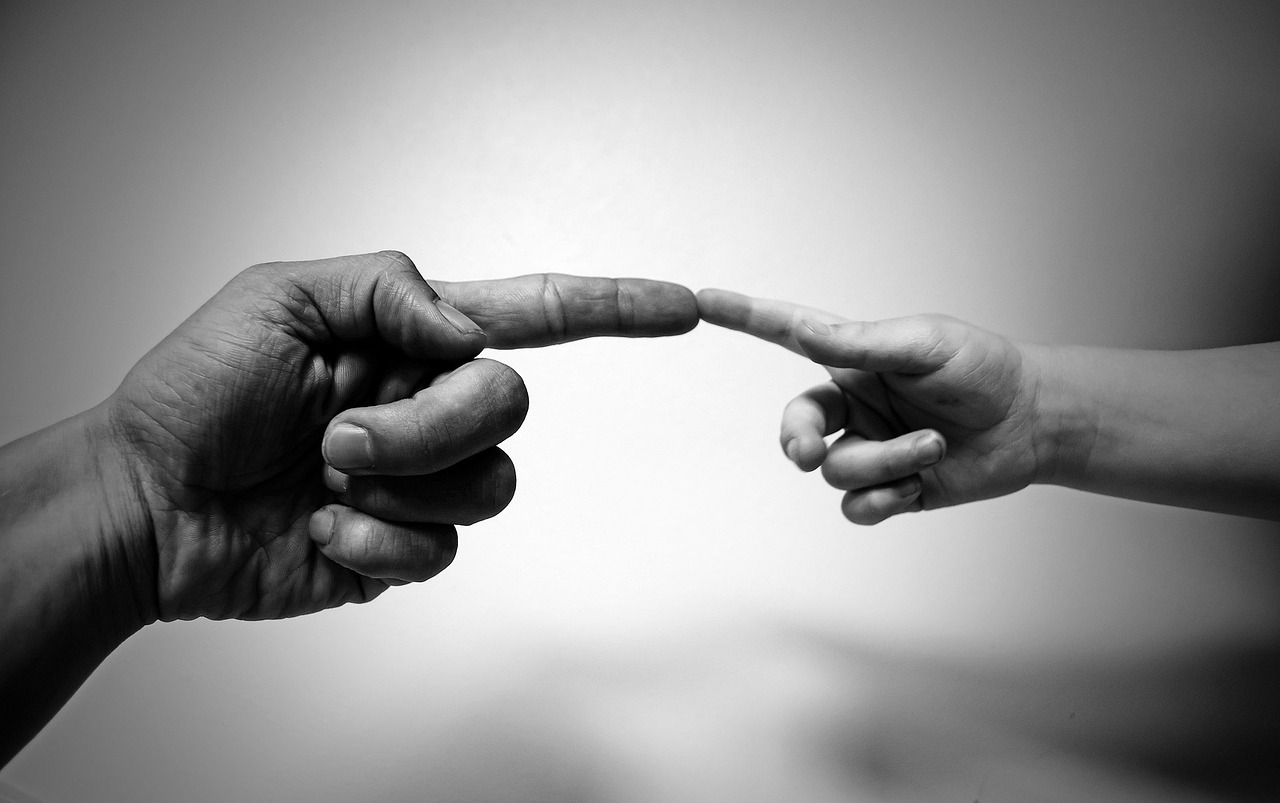
Understanding Babyproofing Basics
When it comes to creating a safe haven for your little ones, understanding the fundamentals of babyproofing is crucial. Imagine your home as a playground filled with potential adventures, but also hidden dangers lurking around every corner. The goal of babyproofing is to transform your living space into a secure environment where your child can explore freely without constant worry for their safety. This involves a keen awareness of the common hazards present in most households and taking proactive steps to mitigate these risks.
First and foremost, it's essential to recognize that babies and toddlers are naturally curious. They have a knack for getting into things we might overlook. This curiosity is a double-edged sword; while it fosters learning and development, it also exposes them to various dangers. Therefore, the first step in babyproofing is to conduct a thorough examination of your home. Look for items that could pose a threat, such as sharp objects, choking hazards, and toxic substances. By identifying these hazards, you can take the necessary measures to secure them.
Let's break down some of the common hazards you might find:
- Sharp Objects: Items like knives, scissors, and glass can lead to serious injuries if not properly stored.
- Choking Hazards: Small toys, coins, or even food items can easily become choking risks.
- Toxic Substances: Cleaning products, medications, and certain plants can be harmful if ingested.
By understanding these basic principles, you can begin to create a safer environment. Remember, babyproofing is not a one-time task but an ongoing process. As your child grows and becomes more mobile, new hazards may arise, and your strategies will need to adapt accordingly. Keeping an open line of communication with other caregivers and regularly reassessing the safety of your home can make a significant difference. Just like a gardener tends to their plants, nurturing a safe environment for your child requires vigilance and care.
In conclusion, the essence of babyproofing lies in creating a protective bubble around your child while allowing them the freedom to explore and learn. By being proactive and informed about the potential dangers in your home, you can significantly reduce the risk of accidents and injuries, ensuring peace of mind for both you and your little adventurer.
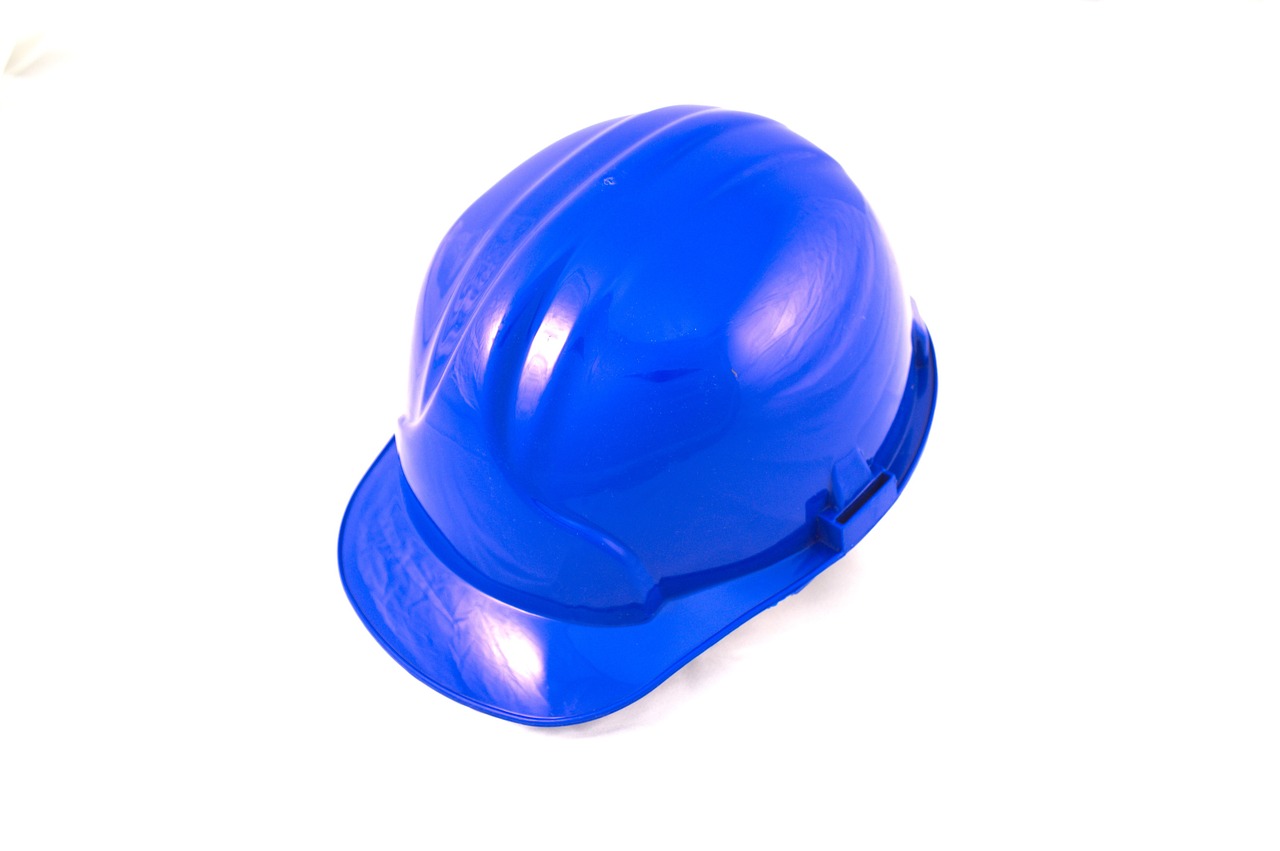
Identifying Common Hazards
When it comes to ensuring your little one’s safety, the first step is to identify the common hazards lurking around your home. It’s a bit like being a detective; you need to scrutinize every corner and think like a curious toddler. After all, children have an uncanny ability to find trouble in the most unsuspecting places! From sharp objects to choking hazards, being aware of these risks is crucial. Let’s dive into the most prevalent dangers that could be hiding in plain sight.
One of the biggest culprits in many households is sharp objects. Think about it: knives, scissors, and even glass items can pose serious threats if left unattended. It’s essential to store these items out of reach, preferably in locked cabinets or high shelves. You wouldn’t want your little explorer to turn into a mini surgeon with a pair of scissors, right? Additionally, using drawer locks can help keep those curious hands away from dangerous tools.
Another common hazard is choking hazards. Small items like coins, buttons, and even certain toys can easily become a choking risk for babies and toddlers. It’s a good idea to regularly check your living space and remove any small objects that could potentially end up in a tiny mouth. You might be surprised at what you find—things that seem innocuous to adults can be incredibly dangerous to little ones. Here’s a quick list of items to be on the lookout for:
- Small toys with removable parts
- Coins and buttons
- Pet toys or balls
- Food items like grapes or nuts
Next up is the ever-present threat of toxic substances. Cleaning supplies, medications, and even some personal care items can be harmful if ingested. It’s vital to store these items in locked cabinets or on high shelves, completely out of reach of tiny hands. Consider using childproof locks and always keep medicines in their original containers with clear labels. Remember, children are naturally curious and may not understand the dangers these products pose.
To give you a clearer picture, here’s a table summarizing some common household items that could pose risks:
| Hazard Type | Examples | Safety Tips |
|---|---|---|
| Sharp Objects | Knives, scissors, glass | Store out of reach; use locks |
| Choking Hazards | Coins, small toys, food items | Regularly check and remove small objects |
| Toxic Substances | Cleaning supplies, medications | Use childproof locks; store high |
By identifying these hazards, you can take proactive steps to mitigate risks in your home. It’s all about creating a safe environment where your child can explore without fear. Remember, babyproofing isn’t a one-time task; it’s an ongoing process. As your child grows, new hazards will arise, so stay vigilant!
Q: How can I tell if a toy is safe for my child?
A: Look for toys that are labeled as age-appropriate and free of small parts. Check for certifications like ASTM or EN71, which indicate safety standards.
Q: What should I do if I find a choking hazard in my home?
A: Remove the item immediately and store it in a safe place. Consider using a choking hazard test, like the toilet paper roll test, to determine if an item is too small for your child.
Q: Are there any specific cleaning products I should avoid?
A: Avoid any products that are not labeled as child-safe. Always read labels and consider using natural cleaning solutions when possible.

Sharp Objects and Tools
When it comes to babyproofing your home, one of the most critical areas to focus on is the management of . These items can pose serious risks to curious little hands that are eager to explore their surroundings. Imagine a toddler wandering into the kitchen, eyes wide with wonder, only to stumble upon a pair of gleaming scissors or a shiny kitchen knife. Yikes! That’s a recipe for disaster. Therefore, it’s essential to take proactive measures to ensure that these items are safely out of reach.
First and foremost, consider the layout of your home. Are there sharp objects readily accessible in drawers or on countertops? If so, it’s time to make some adjustments. Store knives, scissors, and other sharp tools in high cabinets or locked drawers. This simple change can significantly reduce the risk of accidents. Additionally, you might want to invest in drawer locks or latches that can keep inquisitive fingers from opening drawers where these tools are stored.
In the kitchen, safety is paramount. Here are a few practical strategies you can implement:
- Cabinet Locks: Install childproof locks on cabinets that contain sharp tools or hazardous substances. This will prevent your child from gaining access to these areas.
- Knife Blocks: Use knife blocks that can be secured to the countertop, making it difficult for little ones to pull them off and access the blades.
- Stove Guards: If your stove has sharp knobs, consider installing stove guards to prevent your child from turning them on or pulling them off.
Moreover, it’s crucial to educate older siblings about the importance of keeping sharp objects out of reach. Encourage them to help in the babyproofing process by reminding them to put away their craft supplies or tools after use. Creating a culture of safety in your home can empower children to take responsibility and be more cautious.
Another area that often goes overlooked is the garage or workshop. Tools like saws, drills, and other sharp equipment can be particularly dangerous. Ensure that these areas are off-limits to children by installing safety gates or using locks on doors. When working on projects, try to keep tools stored in a secure location when not in use, and always supervise your children if they are in the vicinity.
In conclusion, babyproofing your home against sharp objects and tools is not just about removing items from reach; it’s about creating a safe environment that allows your child to explore without constant worry. By implementing practical safety measures and fostering a culture of awareness, you can significantly reduce the risk of accidents in your home.
Q: What are the best ways to keep sharp objects out of reach?
A: Store sharp objects in high cabinets or locked drawers, use cabinet locks, and educate older siblings about safety.
Q: Are there specific tools that are more dangerous for toddlers?
A: Yes, knives, scissors, and tools with sharp edges or points are particularly hazardous. Always ensure these are stored safely.
Q: How can I teach my child about the dangers of sharp objects?
A: Use simple language to explain why certain items are dangerous, and involve them in the babyproofing process to foster understanding.

Kitchen Safety Measures
When it comes to babyproofing your home, the kitchen can be one of the most challenging areas to navigate. It's a space filled with sharp objects, hot surfaces, and various items that can pose risks to curious little hands. To ensure your kitchen is a safe haven for your child, it's essential to implement a few practical safety measures. One of the first steps is to install cabinet locks. These locks can prevent your child from accessing harmful substances, such as cleaning supplies or sharp utensils. It's amazing how quickly a toddler can reach for something dangerous, so securing these cabinets is a must!
Another crucial aspect of kitchen safety is managing your stove. Using stove guards can help keep your child at a safe distance from hot pots and pans. These guards act as a barrier, preventing little ones from reaching the stove while you’re cooking. Additionally, always turn pot handles inward to avoid accidental spills. You wouldn't want a hot pot of water to become a mini volcano, would you?
It's also wise to store knives and other sharp tools in a place that is completely out of reach. Consider using a magnetic knife strip mounted high on the wall or a locked drawer. This simple change can dramatically reduce the risk of cuts or injuries. Furthermore, keep small appliances unplugged and stored away when not in use. A curious child might see a blender as a toy, but we all know that’s a recipe for disaster!
Finally, don’t forget about the floor! Spills can happen in the kitchen, and they can create slippery surfaces. Using non-slip mats can provide extra traction and help prevent falls. Remember, a little prevention goes a long way in ensuring your kitchen remains a safe space for your little explorers.
In summary, babyproofing your kitchen involves a combination of securing cabinets, managing sharp and hot items, and ensuring the floor is safe. By taking these steps, you can create a kitchen environment that allows your child to explore safely while you prepare delicious meals for the family.

Bathroom Precautions
When it comes to babyproofing your home, the bathroom is one of the most critical areas to consider. This space, often filled with potential hazards, requires special attention to ensure your little explorer can roam safely. First off, let’s talk about medications. It’s essential to store all medications in high cabinets or locked drawers. Even over-the-counter drugs can pose a significant risk if ingested by curious toddlers. Imagine a scenario where your child finds a bottle of colorful pills – it’s a nightmare that can easily be avoided!
Another important aspect of bathroom safety is controlling water temperature. Babies and toddlers have sensitive skin, and a scalding hot bath can lead to serious burns. To prevent this, set your water heater to a maximum of 120°F (49°C). Additionally, consider installing a thermometer in the bathtub to ensure the water is always at a safe temperature. A good rule of thumb is to test the water with your wrist before letting your child in; it should feel warm, not hot.
Slip and fall accidents are also a major concern in bathrooms, particularly when they are wet. To combat this, use non-slip mats both inside and outside the tub. These mats provide traction and help prevent those little feet from sliding around. Furthermore, you might want to install grab bars near the toilet and tub for extra stability. Think of them as safety nets for your little acrobat!
Lastly, be mindful of sharp objects in the bathroom. Items like razors, scissors, and even toothbrushes should be stored out of reach or in cabinets with childproof locks. You wouldn’t want your child to turn bath time into a risky adventure with a sharp tool in hand! By taking these simple precautions, you can transform your bathroom into a safe haven for your child while maintaining your own peace of mind.
In summary, babyproofing the bathroom involves a combination of proper storage, temperature control, slip prevention, and securing sharp objects. Remember, the goal is to create an environment where your child can explore without the constant worry of injury. By implementing these strategies, you’ll be well on your way to a safer home.
- What should I do if my child accidentally gets into medications?
Immediately call your local poison control center or emergency services for guidance. - How can I ensure my child is safe while bathing?
Always supervise your child during bath time and never leave them unattended, even for a moment. - Are there specific products I should buy for babyproofing?
Look for childproof locks, non-slip mats, and faucet covers designed specifically for safety.
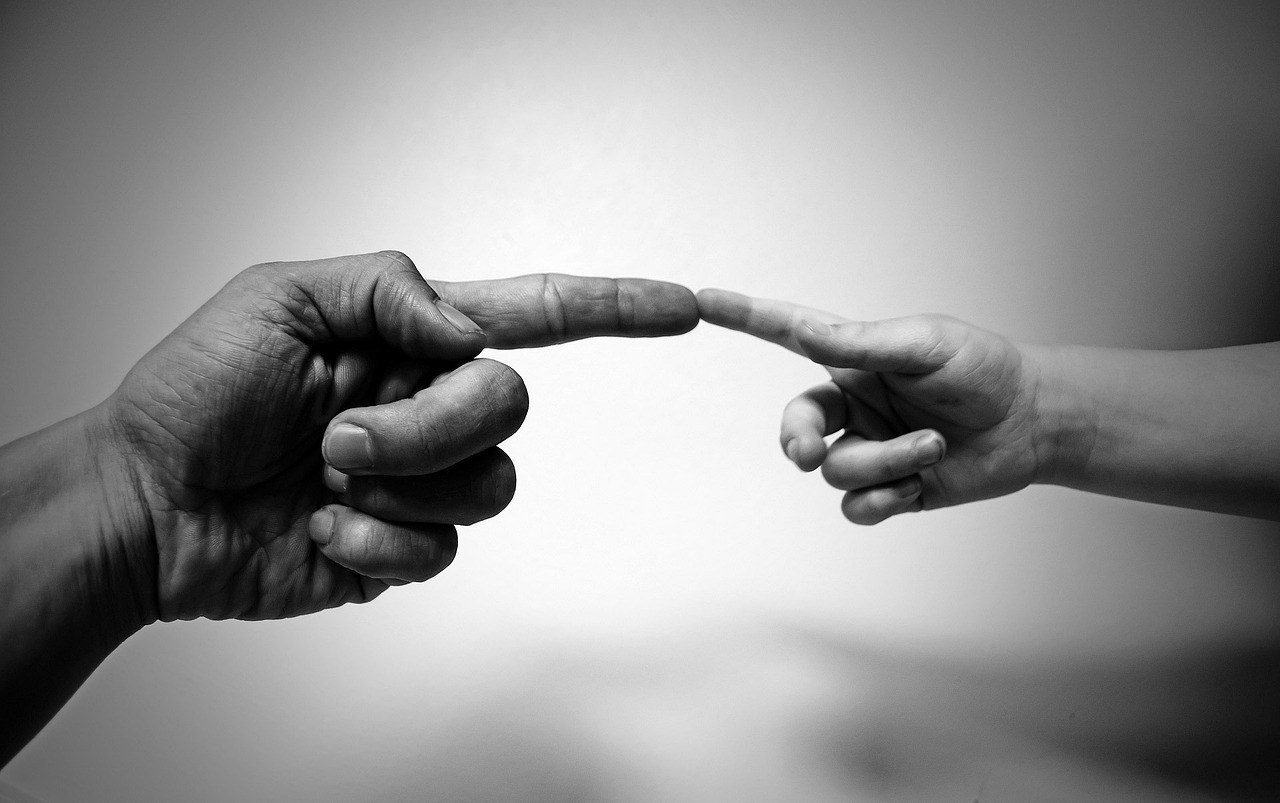
Electrical Safety
When it comes to babyproofing your home, is a crucial aspect that often gets overlooked. Imagine your little one, curious and adventurous, exploring every nook and cranny of your home. Now, picture them reaching for that shiny electrical outlet or tugging on a cord—yikes! The thought alone is enough to send shivers down any parent's spine. That's why understanding how to create a safe environment around electrical items is essential for peace of mind.
First and foremost, one of the most effective ways to prevent electrical accidents is by installing childproof outlet covers. These handy little devices fit snugly into your outlets, making it nearly impossible for tiny fingers to poke around. It's a simple yet powerful solution. Additionally, consider using outlet plates that are designed to automatically close when not in use. This means no more worrying about whether you remembered to put the covers back on after charging your devices.
Next, let’s talk about cords. Those long, dangling cords from lamps, chargers, and electronics can be incredibly tempting for little ones. To keep them safe, try using cord shorteners or organizers to keep excess cord length out of reach. If you have cords that run along the floor, consider using cord covers to prevent tripping hazards and to keep curious hands from yanking on them. You can even use cable ties to bundle cords together, reducing clutter and minimizing the risk of accidents.
Another important consideration is the placement of your appliances. Keep items like toasters, microwaves, and other kitchen gadgets well out of reach. Not only can these devices pose a risk of electrical shock, but they can also cause burns if your child manages to get too close. Consider placing them on high shelves or using safety locks to keep them secured. And don’t forget about extension cords! While they can be a lifesaver, they can also be a danger if not managed properly. Always use extension cords with built-in safety features and avoid running them under rugs or furniture, as this can cause overheating.
In summary, electrical safety is an essential part of babyproofing your home. By taking proactive steps such as installing outlet covers, managing cords, and placing appliances out of reach, you can create a safer environment for your child to explore. Remember, it’s all about prevention—so why not take these simple steps today? Your peace of mind is worth it!
- What are the best outlet covers to use? Look for childproof outlet covers that are difficult for little hands to remove but easy for adults to use.
- How can I secure cords effectively? Use cord organizers, ties, and covers to keep cords bundled and out of reach.
- Are there any specific appliances I should be more cautious about? Yes, kitchen appliances like toasters and microwaves should be kept out of reach due to their potential hazards.
- What should I do if my child is fascinated by electrical outlets? Redirect their attention with safe toys and ensure that all outlets are covered.
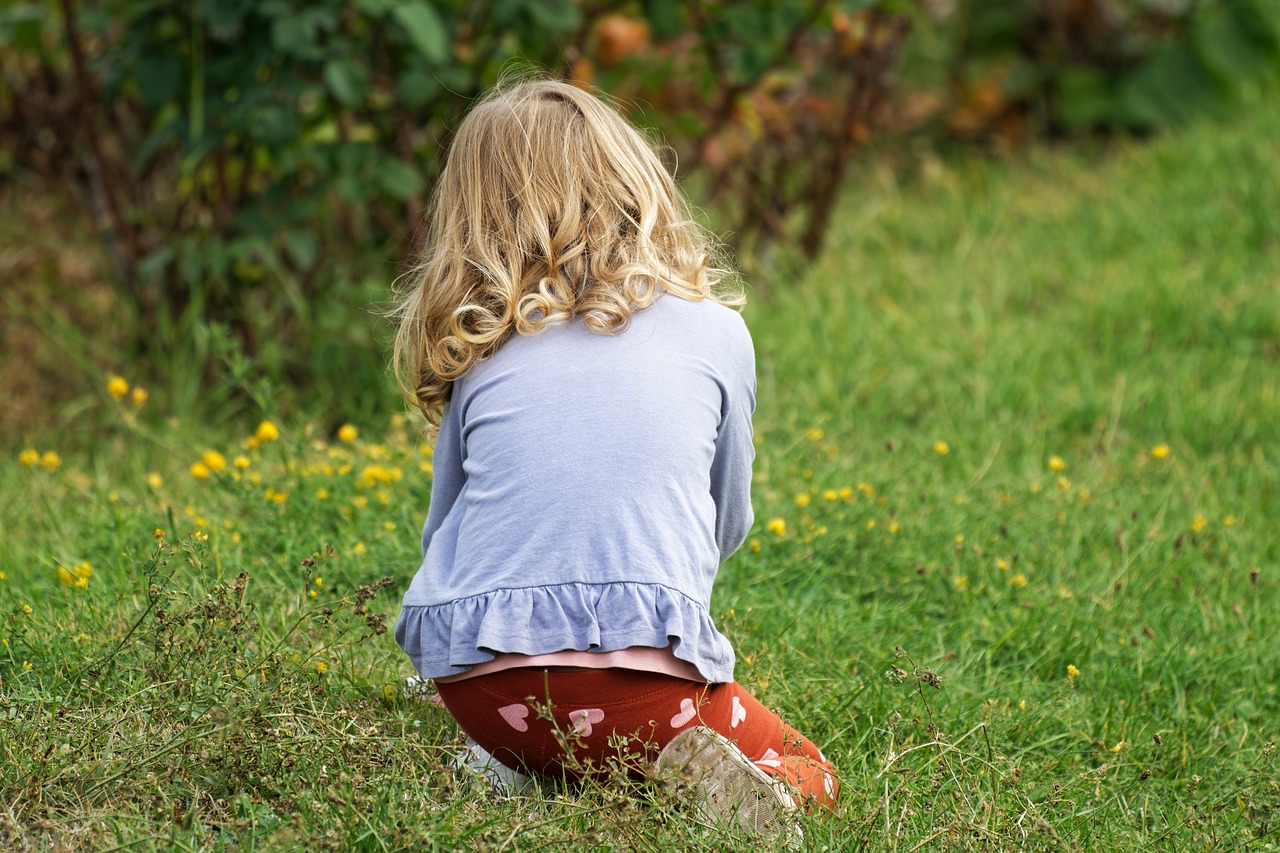
Creating Safe Play Areas
Creating a safe play area for your little one is essential for their development and exploration. Think of it as building a fortress where your child can roam freely without the constant worry of potential dangers lurking around every corner. When you set up a play area, you're not just providing space; you're crafting an environment where curiosity can thrive safely. So, how do you go about designing this perfect haven for your child? Let’s dive in!
First and foremost, consider the location of the play area. Ideally, it should be in a room where you can easily supervise your child. This could be a living room, playroom, or even a section of your backyard. The key is to ensure that it's a space where you can keep an eye on your little explorer while they engage in their adventures. To make it even safer, you might want to use safety gates to block off areas that could pose a risk. For instance, if you have stairs, installing a gate at the top and bottom can prevent any unfortunate tumbles.
Next, let’s talk about the surface of the play area. Hard floors can be unforgiving, and toddlers are known for their unsteady gait. To minimize the risk of injury during playtime, consider using soft surfaces like foam mats, carpets, or even a large play rug. These materials can cushion falls and provide a cozy space for your child to sit and play. Adding some colorful, engaging mats can also stimulate your child’s senses and make the area more inviting.
In addition to the floor, it’s crucial to evaluate the surrounding furniture. Sharp edges on tables or low furniture can be hazardous. You can use corner protectors to soften these edges or rearrange furniture to create a clear path for your child to navigate. Remember, the goal is to create a space that encourages exploration without the fear of bumps and bruises. You might even want to consider a playpen for younger children, providing a designated area that is both safe and secure.
When it comes to toys, the selection is just as important as the environment itself. Ensure that all toys are age-appropriate and free from small parts that could pose a choking hazard. Look for toys made from non-toxic materials, as babies and toddlers are known for putting everything in their mouths. A good rule of thumb is to choose toys that are larger than your child's mouth to avoid any choking risks. You might also want to consider organizing toys in bins or baskets to keep the area tidy and prevent tripping hazards.
Finally, let's not forget about the outdoor play areas! If you have a backyard or garden, it’s essential to babyproof this space too. Make sure that fences are secure and check for any hazardous plants that could be harmful if ingested. Additionally, consider using mulch or grass as a soft landing surface for any outdoor play equipment like slides or swings. By taking these steps, you can create an outdoor sanctuary where your child can explore nature safely.
In conclusion, creating safe play areas is about more than just removing hazards; it's about fostering a nurturing environment that encourages your child's growth and independence. With careful planning and consideration, you can ensure that your little one has the freedom to play and discover, all while keeping safety at the forefront. Remember, a safe play area is a happy play area!
- What age is appropriate for creating a play area?
It's never too early to start! You can create a safe play area even for infants, just ensure that it's equipped with soft surfaces and safe toys.
- How do I know if a toy is safe for my child?
Always check the age recommendations on the packaging and look for toys that are free from small parts and made of non-toxic materials.
- What should I do if my child climbs on furniture?
Consider rearranging the furniture to make climbing less enticing or use safety gates to limit access to certain areas.
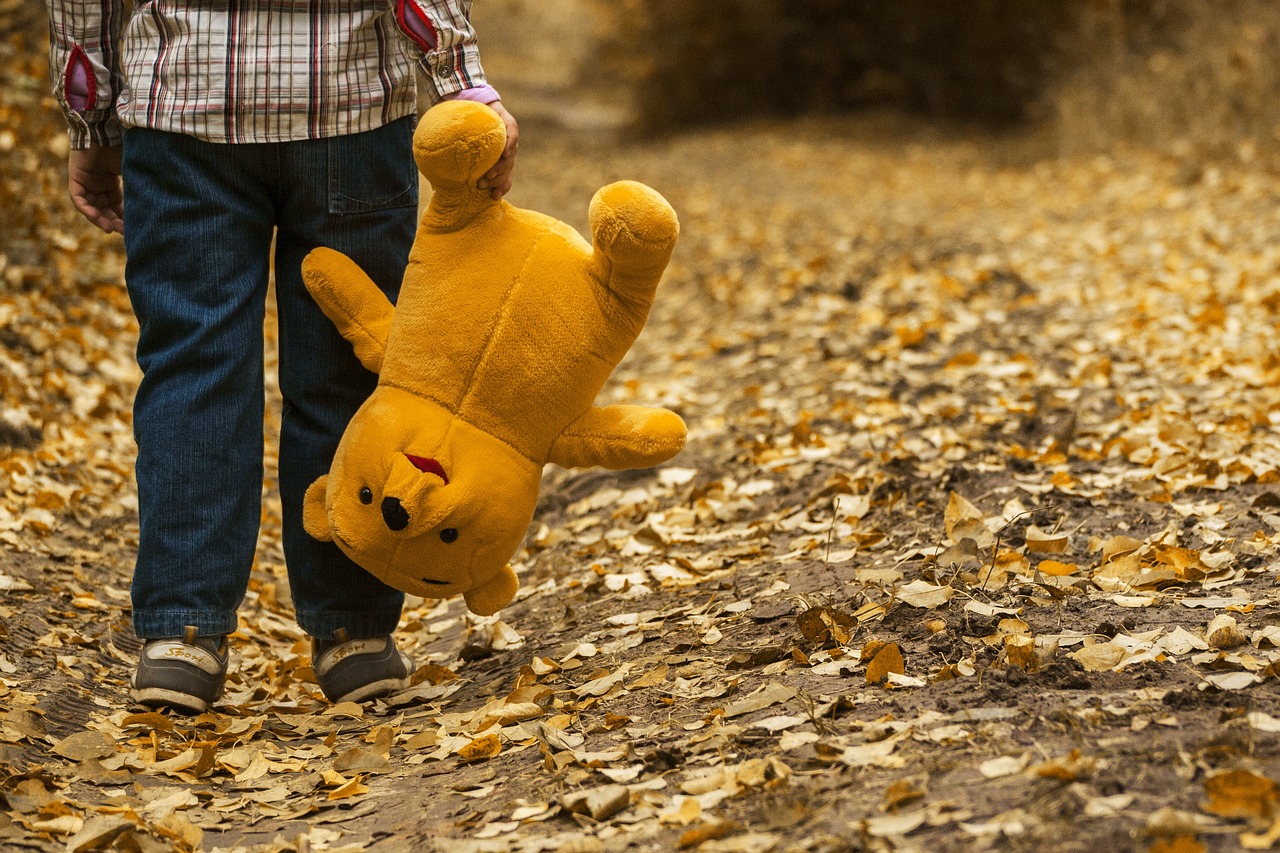
Choosing Safe Toys
When it comes to for your little ones, it's not just about picking something that looks fun; it's about ensuring their safety while they play. Imagine your child exploring a world filled with colorful toys, their laughter echoing through the house. Now, picture that same world, but with hidden dangers lurking in the corners. As parents, we want to create an environment where our children can play freely without the worry of choking hazards or toxic materials. So, how do we navigate this maze of toy options?
First and foremost, always check the age recommendations on toy packaging. Toys designed for older children may contain small parts that could pose a choking risk to toddlers and infants. For example, a toy that seems harmless to a 5-year-old could be a potential choking hazard for a curious 2-year-old. This is why you'll often see age labels on packaging—it's not just a suggestion; it's a safety guideline!
Another crucial factor is the materials used in the toys. Many parents are becoming more aware of the importance of non-toxic materials. Look for toys made from natural materials like wood or those labeled as BPA-free and phthalate-free. These chemicals can be harmful to your child’s health, and you want to avoid them like the plague! Additionally, soft toys should be washable and free from hazardous dyes or treatments, ensuring that your child's playtime is both fun and safe.
To help you in your quest for safe toys, here’s a quick checklist of what to look for:
- Age Appropriateness: Always adhere to the manufacturer's age recommendations.
- Non-toxic Materials: Choose toys made from safe, natural materials.
- No Small Parts: Ensure toys do not contain small detachable pieces.
- Washable: Opt for toys that can be easily cleaned.
Moreover, it's essential to keep an eye on the condition of your child's toys. As they play, toys can wear down, and parts can break off. Regularly inspect their toys for any signs of damage, and if you find something that looks questionable, it’s better to be safe than sorry—dispose of it! Remember, a broken toy can quickly turn into a dangerous object if not monitored.
Finally, consider the educational value of the toys you choose. While safety is paramount, toys that stimulate your child's imagination and promote learning can enhance their development. Look for toys that encourage creativity, problem-solving, and physical activity. After all, a safe toy is one that not only keeps your child out of harm's way but also helps them grow and learn!
Q: How can I tell if a toy is safe for my child?
A: Always check for age recommendations, materials used, and ensure there are no small parts that could pose choking hazards. Look for safety certifications as well.
Q: Are there specific brands known for safe toys?
A: Many brands focus on safety and quality, such as Melissa & Doug, Hape, and Green Toys. Always research and read reviews before purchasing.
Q: What should I do if a toy gets damaged?
A: Regularly inspect toys for wear and tear. If you find any damage, it’s best to dispose of the toy to prevent any accidents.
Q: Can I trust online reviews for toy safety?
A: While online reviews can be helpful, always cross-reference with trusted safety organizations and look for toys that meet safety standards.
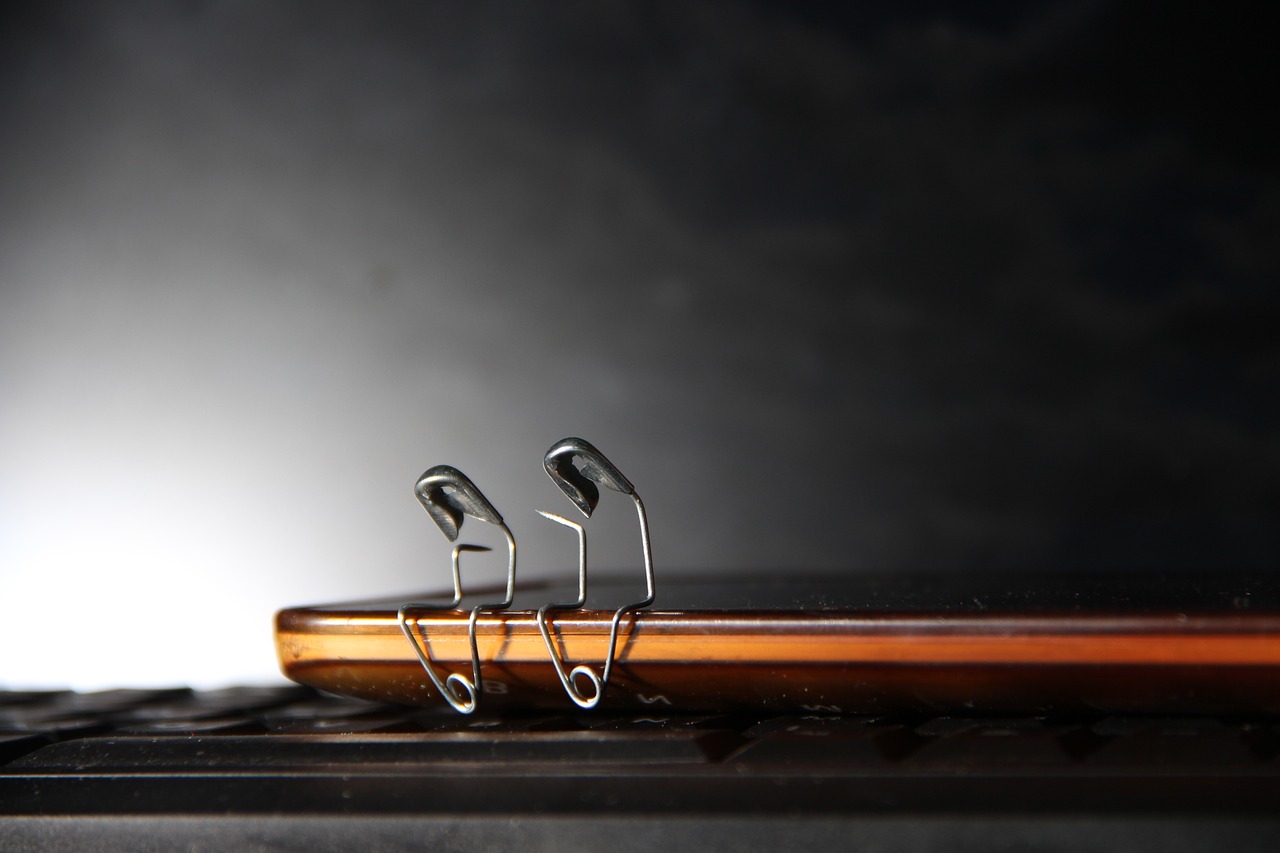
Outdoor Safety Considerations
When it comes to babyproofing your home, the outdoor environment often gets overlooked. However, ensuring that your garden, yard, or any outdoor space is safe for your little explorers is just as crucial as securing the inside of your home. After all, children are naturally curious, and the great outdoors can pose a myriad of dangers that parents need to address. From sharp tools to toxic plants, let's dive into how you can create a safe haven for your child outside.
First and foremost, one of the most effective ways to enhance outdoor safety is by installing secure fences around your yard. A sturdy fence not only keeps your child contained but also acts as a barrier against any potential hazards from the outside world. Make sure the fence is tall enough to prevent climbing and that there are no gaps or protrusions that could pose a risk. Additionally, consider using self-closing gates with childproof locks to prevent little ones from wandering off when your back is turned.
Next, take a closer look at the plants in your outdoor space. Many common garden plants can be toxic if ingested. It's essential to familiarize yourself with the plants in your yard and remove any that could be harmful. Some common toxic plants include:
- Foxglove - Highly toxic, can cause serious heart issues.
- Oleander - Even small amounts can be fatal.
- Azaleas - Can cause vomiting and diarrhea if ingested.
By removing these plants or at least ensuring your child cannot access them, you can significantly reduce the risk of accidental poisoning.
Another outdoor safety consideration is the equipment and tools you have lying around. Lawn mowers, gardening tools, and even bicycles can pose serious risks if not properly stored. Make it a habit to put away tools immediately after use and teach your child about the dangers of these items. A locked shed or storage area is an excellent way to keep them out of reach. Additionally, ensure that any outdoor furniture is stable and free from sharp edges, as children often climb and explore their surroundings.
Don't forget about the importance of safe play surfaces. If your child has a playset or swings in the yard, make sure to install impact-absorbing materials underneath, such as rubber mulch, sand, or grass. These materials can help cushion falls and minimize injuries. Regularly inspect your play equipment for any signs of wear and tear, ensuring everything is secure and safe for use.
Lastly, consider the weather conditions. Hot days can lead to heat exhaustion or dehydration, while rainy days can create slippery surfaces. Always supervise your child during outdoor play, especially in extreme weather. Equip them with appropriate clothing and ensure they have access to water to stay hydrated. By being proactive and vigilant, you can create a safe outdoor environment that allows your child to explore and enjoy nature without unnecessary risks.
Q: What should I do if I find a poisonous plant in my yard?
A: If you find a poisonous plant, it's best to remove it immediately. Wear gloves and ensure the plant is disposed of safely to prevent any accidental ingestion by your child or pets.
Q: How can I teach my child about outdoor safety?
A: Start by explaining the dangers in simple terms. Use role-playing scenarios to teach them what to avoid, and always supervise them during outdoor play until they understand the rules.
Q: Are there any specific safety products I should consider for outdoor use?
A: Yes! Look for childproof locks for gates, safety nets for play equipment, and protective coverings for sharp edges. Additionally, sunscreen and insect repellent are essential for outdoor safety.
Frequently Asked Questions
- What is babyproofing, and why is it important?
Babyproofing is the process of making your home safe for babies and toddlers by identifying and mitigating potential hazards. It's crucial because young children are naturally curious and tend to explore their surroundings, which can lead to accidents if the environment isn't secure. By babyproofing, you can ensure peace of mind while allowing your little ones to explore safely.
- What common hazards should I look for in my home?
Common hazards include sharp objects like knives and scissors, choking hazards such as small toys or household items, and toxic substances like cleaning supplies or medications. It's essential to conduct a thorough inspection of your home to identify these dangers and take appropriate measures to eliminate or secure them.
- How can I secure sharp objects in my home?
To secure sharp objects, store knives, scissors, and other tools in high cabinets or drawers with childproof locks. You can also use magnetic knife strips that are out of reach or invest in childproof storage solutions that keep these items safely tucked away from curious hands.
- What safety measures should I take in the kitchen?
In the kitchen, consider installing cabinet locks to prevent access to hazardous items. Use stove guards to keep your child safe from hot surfaces, and always supervise your little one while cooking. It's also a good idea to keep sharp utensils and hot pots out of reach.
- How can I ensure bathroom safety for my child?
To ensure bathroom safety, secure medications in high cabinets and use non-slip mats in the tub and on the floor to prevent slips. Always keep the toilet lid closed and consider using a toilet lock to prevent accidental falls or drowning.
- What are some tips for electrical safety in my home?
Childproof electrical outlets with safety covers and ensure that cords are secured and out of reach. Avoid using extension cords in areas where children play, and consider hiring a professional to install tamper-resistant outlets for added security.
- How can I create a safe play area for my child?
To create a safe play area, use safety gates to restrict access to dangerous areas, and cover hard surfaces with soft mats to minimize injury during play. Always supervise playtime and regularly inspect toys for safety.
- What should I consider when choosing toys for my child?
When selecting toys, choose age-appropriate items that are free from small parts and made from non-toxic materials. Look for safety certifications and avoid toys with sharp edges or potential choking hazards to ensure a safe play experience.
- How can I babyproof outdoor spaces?
To babyproof outdoor areas, secure fences to prevent your child from wandering off, and remove any hazardous plants or sharp objects. Create a safe play area with soft grass or rubber mats, and always supervise your child during outdoor play.


